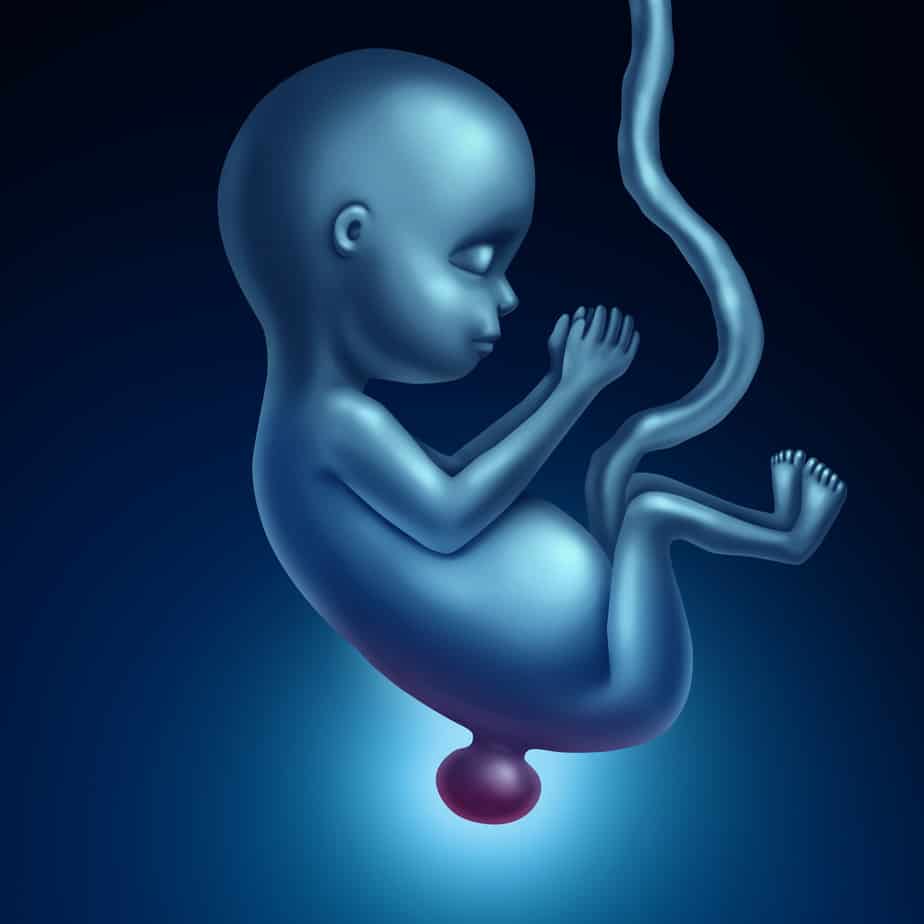
Overview
Spina bifida is the most common birth defect in the United States that results in permanent disability – the literal meaning of the name is “Split spine” and occurs during the first 28 days of pregnancy. It is a neural tube defect, and the neural tube is a hollow structure in an embryo from where the brain and spinal cord form. The spinal column doesn’t close completely when it should early in pregnancy, and this damages the nerves and spinal cord.
Since there are so many variables in spina bifida (depends on the location, size, and type of defect), the resulting signs and symptoms vary widely from person to person. It can range from mild to severe, and early treatment (surgery) doesn’t always completely fix it.
Since there are so many variables in spina bifida (depends on the location, size, and type of defect), the resulting signs and symptoms vary widely from person to person. It can range from mild to severe, and early treatment (surgery) doesn’t always completely fix it.
Types of Spina Bifida
After getting infected by the measles virus, symptoms start appearing within one to two weeks. Before symptoms start, a person can be infected and not even know it. The symptoms include high fever (getting to more than 104 degrees and making it very dangerous for young children and babies), cough, runny nose, and red watery (inflamed) eyes.
Within a couple days of symptoms appearing, Koplik spots sometimes appear in the mouth – these are tiny white spots. The next symptom to appear is the measles rash, small raised bumps that may join together and start on the face then move down the body all the way down to the feet.
Measles is known as one of the world’s most contagious diseases. Once infected, measles is contagious for about eight days – four days before the rash appears (and symptoms have started), and four days after the rash has appeared. Measles is spread through the virus in the nose and throat, so from coughing, sneezing, or talking. Other people breathe in the infected droplets from the air, or from touching a surface that has been contaminated by the droplets.
It is estimated that 90% of people who are susceptible to measles and get exposed to the virus will get infected. Measles epidemics are especially fatal in developing countries and in countries recovering from a natural disaster or a conflict.
Measles can result in complications, including an ear infection, inflammation of the lungs leading to bronchitis or croup, pneumonia (especially for someone who contracts measles with an already compromised immune system), blindness, and encephalitis (1 in 1,000 cases of measles).
Within a couple days of symptoms appearing, Koplik spots sometimes appear in the mouth – these are tiny white spots. The next symptom to appear is the measles rash, small raised bumps that may join together and start on the face then move down the body all the way down to the feet.
Measles is known as one of the world’s most contagious diseases. Once infected, measles is contagious for about eight days – four days before the rash appears (and symptoms have started), and four days after the rash has appeared. Measles is spread through the virus in the nose and throat, so from coughing, sneezing, or talking. Other people breathe in the infected droplets from the air, or from touching a surface that has been contaminated by the droplets.
It is estimated that 90% of people who are susceptible to measles and get exposed to the virus will get infected. Measles epidemics are especially fatal in developing countries and in countries recovering from a natural disaster or a conflict.
Measles can result in complications, including an ear infection, inflammation of the lungs leading to bronchitis or croup, pneumonia (especially for someone who contracts measles with an already compromised immune system), blindness, and encephalitis (1 in 1,000 cases of measles).
Causes of Spina Bifida
Spina bifida only occurs in the first month of pregnancy, so risks for it are associated with the mother, although the specific reason for it occuring still isn’t known.
White and Hispanic women more commonly have children with spina bifida, and those who have a family history of neural tube defects – a couple who has one child with a neural tube defect has a higher chance of another child developing a defect. While there’s been a genetic component noted, most babies born with spina bifida actually come from no family history of it.
Women who have a folate deficiency (folic acid – vitamin B-9) increases the risk of neural tube defects, including spina bifida – this is why women who are trying to get pregnant or are pregnant are advised to take folic acid. Women who take certain medications while pregnant (such as anti-seizure meds) that interfere with the body’s use of folate have a higher risk of having a baby with neural tube defects.
Pregnant women with diabetes who don’t have their blood sugar under control, and women who are obese before becoming pregnant are more likely to have a baby with spina bifida or other neural tube defects.
There’s been a link seen between body temperature and neural tube defects in babies – women who are pregnant or trying to get pregnant should avoid having a high body temperature from things like sitting in a hot tub or in a sauna, and treating any fever immediately with over-the-counter medications.
White and Hispanic women more commonly have children with spina bifida, and those who have a family history of neural tube defects – a couple who has one child with a neural tube defect has a higher chance of another child developing a defect. While there’s been a genetic component noted, most babies born with spina bifida actually come from no family history of it.
Women who have a folate deficiency (folic acid – vitamin B-9) increases the risk of neural tube defects, including spina bifida – this is why women who are trying to get pregnant or are pregnant are advised to take folic acid. Women who take certain medications while pregnant (such as anti-seizure meds) that interfere with the body’s use of folate have a higher risk of having a baby with neural tube defects.
Pregnant women with diabetes who don’t have their blood sugar under control, and women who are obese before becoming pregnant are more likely to have a baby with spina bifida or other neural tube defects.
There’s been a link seen between body temperature and neural tube defects in babies – women who are pregnant or trying to get pregnant should avoid having a high body temperature from things like sitting in a hot tub or in a sauna, and treating any fever immediately with over-the-counter medications.
Diagnosis & Treatment
Spina bifida can be detected in the fetus before birth, since it develops during the first month of pregnancy. There are three tests in utero that can be performed: a blood test (in the 16th-18th weeks of pregnancy) which is called the alpha-fetoprotein (AFP) screening test in which high levels of protein indicate a neural tube defect, an ultrasound of the fetus (which could show signs of spina bifida including the open spine), and a lab test on a small amount of fluid taken from the womb called maternal amniocentesis – it tests protein (AFP) levels.
In some cases, spina bifida is not diagnosed until the baby is born, particularly if the mother has not had access to adequate healthcare during pregnancy. For cases of spina bifida occulta, the only sign of it may be a dimple or hairy patch of skin on the back, which can be checked with imaging to see the spine and bones.
Since spina bifida can range so much in severity, treatment depends on the specific case. Fetal surgery in the 26th week of pregnancy can be performed to repair the spinal cord to reduce disabilities after birth; however, it can increase the risk of hydrocephalus.
Most babies with myelomeningocele are in a breech position, so a C-section may be required at birth. After birth, surgery can be performed to repair the spinal cord for both meningocele and myelomeningocele. In this surgery, a neurosurgeon puts the meninges back inside the spine and closes the opening of the vertebrae (for meningocele) or places the exposed sac of skin back into the body and covers the area with muscle and skin (for myelomeningocele) – a shunt may be used to control hydrocephalus in the brain during the operation.
After surgery, complications may happen and treatment is ongoing through the child’s life. Babies who have myelomeningocele may need multiple surgeries as they grow up for the nerve damage. In severe cases, children may need walkers or a wheelchair in addition to physical therapy. GI problems require ongoing monitoring and evaluations that may be more frequent in childhood.
As babies with spina bifida grow up who have a more severe case, they will need ongoing care in many areas to live as independently as possible, which is the goal for all patients.
In some cases, spina bifida is not diagnosed until the baby is born, particularly if the mother has not had access to adequate healthcare during pregnancy. For cases of spina bifida occulta, the only sign of it may be a dimple or hairy patch of skin on the back, which can be checked with imaging to see the spine and bones.
Since spina bifida can range so much in severity, treatment depends on the specific case. Fetal surgery in the 26th week of pregnancy can be performed to repair the spinal cord to reduce disabilities after birth; however, it can increase the risk of hydrocephalus.
Most babies with myelomeningocele are in a breech position, so a C-section may be required at birth. After birth, surgery can be performed to repair the spinal cord for both meningocele and myelomeningocele. In this surgery, a neurosurgeon puts the meninges back inside the spine and closes the opening of the vertebrae (for meningocele) or places the exposed sac of skin back into the body and covers the area with muscle and skin (for myelomeningocele) – a shunt may be used to control hydrocephalus in the brain during the operation.
After surgery, complications may happen and treatment is ongoing through the child’s life. Babies who have myelomeningocele may need multiple surgeries as they grow up for the nerve damage. In severe cases, children may need walkers or a wheelchair in addition to physical therapy. GI problems require ongoing monitoring and evaluations that may be more frequent in childhood.
As babies with spina bifida grow up who have a more severe case, they will need ongoing care in many areas to live as independently as possible, which is the goal for all patients.
Sources and More Information
Centers for Disease Control and Prevention, “What is Spina Bifida?” https://www.cdc.gov/ncbddd/spinabifida/facts.html
Mayo Clinic, “Spina Bifida” https://www.mayoclinic.org/diseases-conditions/spina-bifida/symptoms-causes/syc-20377860
Spina Bifida Association, “What is Spina Bifida?” https://www.spinabifidaassociation.org/what-is-spina-bifida/
U.S. National Library of Medicine – Medline Plus, “Spina Bifida” https://medlineplus.gov/spinabifida.html
Mayo Clinic, “Spina Bifida” https://www.mayoclinic.org/diseases-conditions/spina-bifida/symptoms-causes/syc-20377860
Spina Bifida Association, “What is Spina Bifida?” https://www.spinabifidaassociation.org/what-is-spina-bifida/
U.S. National Library of Medicine – Medline Plus, “Spina Bifida” https://medlineplus.gov/spinabifida.html


